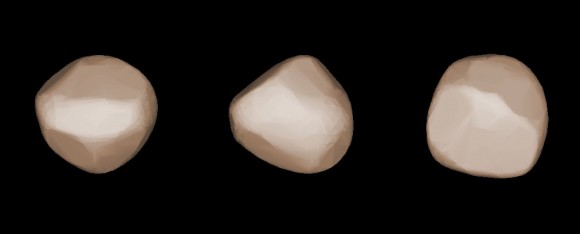| Online: | |
| Visits: | |
| Stories: |

| Story Views | |
| Now: | |
| Last Hour: | |
| Last 24 Hours: | |
| Total: | |
Observing Challenge: How to See Asteroid Hebe, Mother of Mucho Meteorites

A 3-D model of 6 Hebe based on its light curve. The asteroid is about 120 miles in diameter and the fifth brightest in the Main belt after Vesta, Ceres, Iris and Pallas. Credit: Charles University /Josef Durech /Vojtech Sidorin
In the reeds that line the banks of the celestial river Eridanus, you’ll find Hebe on the prowl this month. Discovered in 1847 by German amateur astronomer Karl Ludwig Hencke , the asteroid may hold the key to the origin of the H-chondrites, a large class of metal-rich stony meteorites found in numerous amateur and professional collections around the world. You can now see this interesting minor planet with nothing more than a pair of binoculars or small telescope. (…)
Read the rest of Observing Challenge: How to See Asteroid Hebe, Mother of Mucho Meteorites (661 words)
© Bob King for Universe Today, 2014. |
Permalink |
No comment |
Post tags: asteroid, Eridanus, H-chondrites, Hebe, Karl Hencke, NWA 2710, reflectance spectrum
Feed enhanced by Better Feed from Ozh
Source: http://www.universetoday.com/116808/observing-challenge-how-to-see-asteroid-hebe-mother-of-mucho-meteorites/



